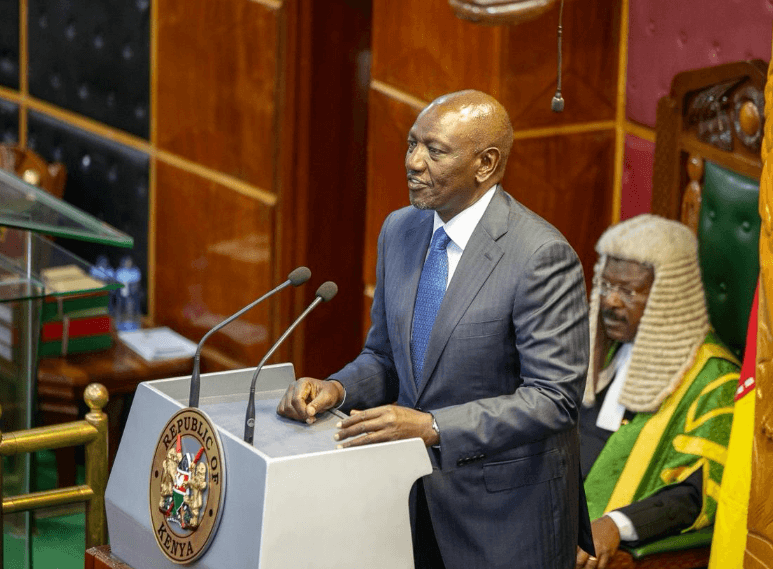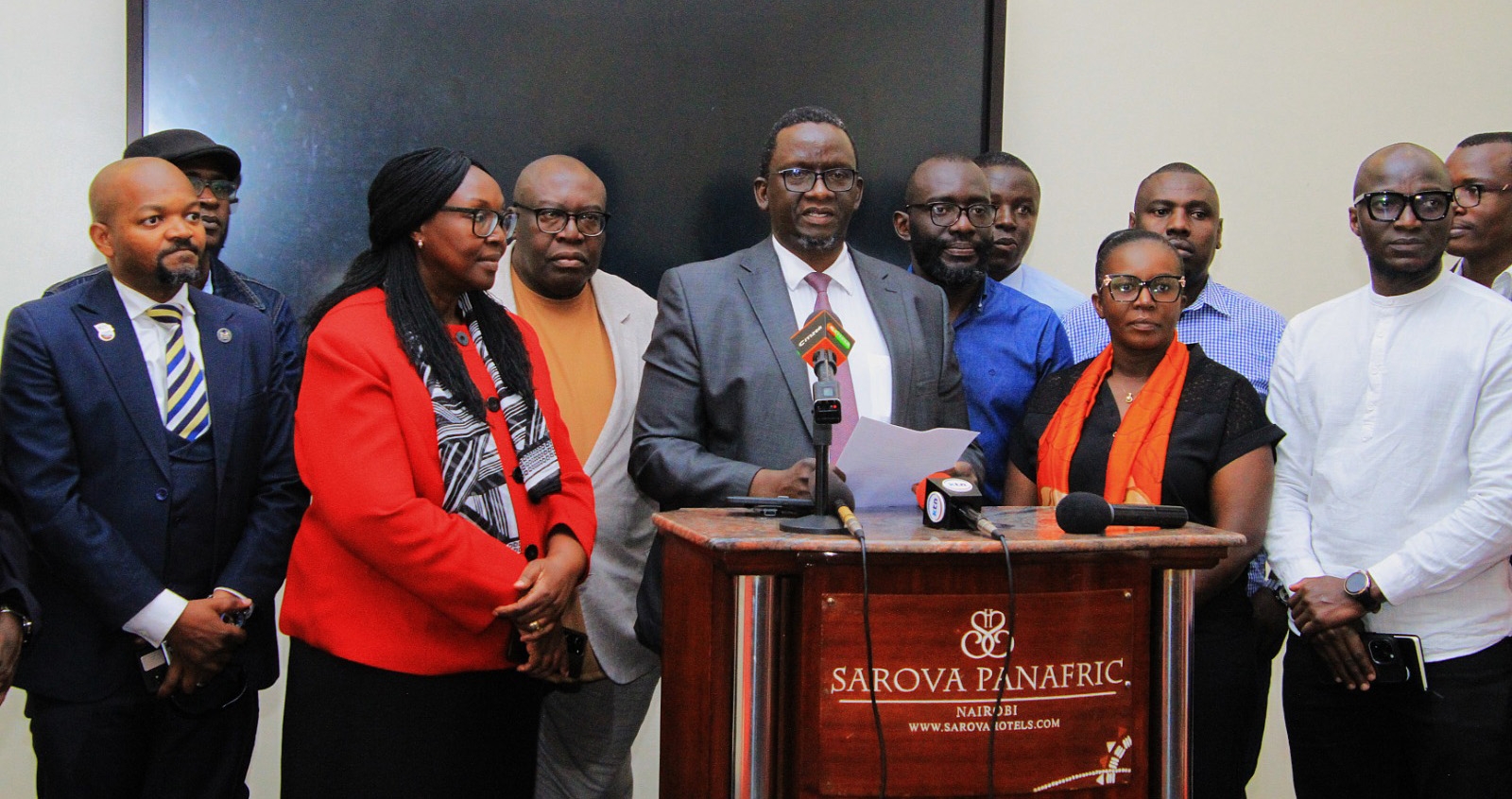Nakuru County government is reviewing its marketing strategy as part of the efforts to attract more tourists into the region.
The devolved unit’s administration is also in the process of operationalising its tourism board which is responsible for marketing and formulating policies governing the sector.
Stephen Kuria said the move is part of innovative and creative marketing strategies to enhance Nakuru's visibility in the global tourism market.
It aims to expand its focus beyond traditional tourism offerings.
Kuria is a County Executive Committee Member for Trade, Tourism and Cooperatives.
He said the county assembly had approved the Tourist and Marketing Bill which set up the Nakuru County Tourism Board.
The Bill was signed into law by then-governor Lee Kinyanjui.
“There are aspects of tourism in Nakuru that have not been marketed, they are the ones we are seeking to leverage to attract more visitors to the tourist town,” he said.
By setting up a Tourism Board, Nakuru will be borrowing a leaf from destinations around the world where tourism is marketed locally instead of relying on the national tourism board.
Kuria said Kenya could triple earnings from tourism if the right marketing strategy was used to promote the sector by reaching out to potential tourists.
“We have begun paying attention to marketing in particular because that is the persuasive element of the strategy.
"Marketing will get us our rightful consideration among potential tourists and help us realise our rightful numbers,” Kuria said.
He was speaking when he signed a Memorandum of Understanding with NaxCity Kenya Limited.
It is a marketing and advertising agency, in a move geared towards the mapping out, packaging and activation of the existing tourism sites and gems tucked within the county.
It is associated with tourist sites which are both known and unknown to potential tourists and stakeholders.
He said there was a need to extend beyond working with the national government and reach out to potential partners in the tourism industry.
“We can’t sit and wait for the Kenya Tourism Board to market for us,” said Kuria.
He said once the board is operationalised, it would give priority to some tourist products that have not been well marketed in Nakuru.
They include the Menengai Crater, Hyrax Hill Museum and Kariandusi pre-historic site.
Nakuru has some of the most visited tourist sites in Kenya including Lake Nakuru National Park, Lake Naivasha, Hells Gate Park, and Subukia Shrine among others.
The Nakuru county Tourist and Marketing Act provides a comprehensive legal framework for the development, management, marketing and regulation of sustainable tourism in the county.
The Act mandates the board to develop, implement and coordinate a county tourism and marketing strategy.
According to the statute, the board comprising key stakeholders in the tourism sector, will be headed by a chairperson appointed by the governor.
The Chief Executive Officer who will hold office for a term of three years will be recruited by the County Public Service Board.
The board will market Nakuru at national, regional and international levels as a premier tourism and filming destination.
The board will identify market needs and advise tourism stakeholders on the market trends.
The board will recommend areas that have significance culturally, archaeologically and ecologically sensitive for gazettement.
It will also establish and develop county tourist health facilities besides promoting water sports and big game fishing activities.
Kuria said the core mandate of the board would be to bring together all key tourism stakeholders to market Nakuru County domestically, regionally and internationally.
This will structure tourism affairs better to achieve more in the sector.
The CECM observed that globalisation had increased competition since many services offered in Kenya’s tourism sector were found elsewhere.
“We must exploit the potential for devolution,” Kuria said.
Tourism is not a devolved sector but some of the functions such as zoning, law enforcement, planning, and partnerships are devolved to the counties.
“We have a rich culture, wildlife, and other magical places. We have more potential,” Kuria said.
The signing of the MOU was witnessed by South Rift Deputy Regional Manager- Tourism Fund County Charles Gumbo, Chief Officer for Tourism and Culture John Koech, County Assembly Committee Members for Trade led by their chairman Stanley Karanja, NaxCity’s Director Joseph Muhika, Directors for Culture Ledicia Wanyonyi and Eric Muriuki and General Manager, Sarova Woodlands Hotel Duncan Maina.
The CECM said both the national and county governments have ensured adequate security and developed infrastructure to promote tourism.
NaxCity Kenya CEO Catherine Kanyi said though Kenya’s rich biodiversity formed the base of the country’s global competitiveness as a tourism destination, global tourism was a cutthroat business and extremely competitive.
It needed a drastic change to make the country an African and global tourism powerhouse.
“There are countries in Africa that attract up to seven times the number of tourists as we do with fewer and less stunning attractions than we have,” she said.
“This is why it is marketing that will get us our rightful consideration among potential tourists and help us realise our rightful numbers.We therefore need to take tourism in our country to a whole new level and harness the huge potential this area holds to grow our economy,” Kanyi added.
Kanyi said in the spirit of devolution, county governments have a critical role to play in the success of the tourism and wildlife strategy.
This is to protect habitats and ecosystems and maintain purity for current and future generations.
The CEO affirmed that innovation and change of marketing strategy were critical for the development of the tourism sector.
“We also need to start thinking about promoting intra-Africa tourism. Africa has a population of about 1.2 billion people, but only receives 62 million tourists, which is disappointing,” Kanyi said.
Kanyi said the nation must stop relying on wildlife and beach-goers to power its billion-shilling tourism sector as this generally benefits the rich.
















